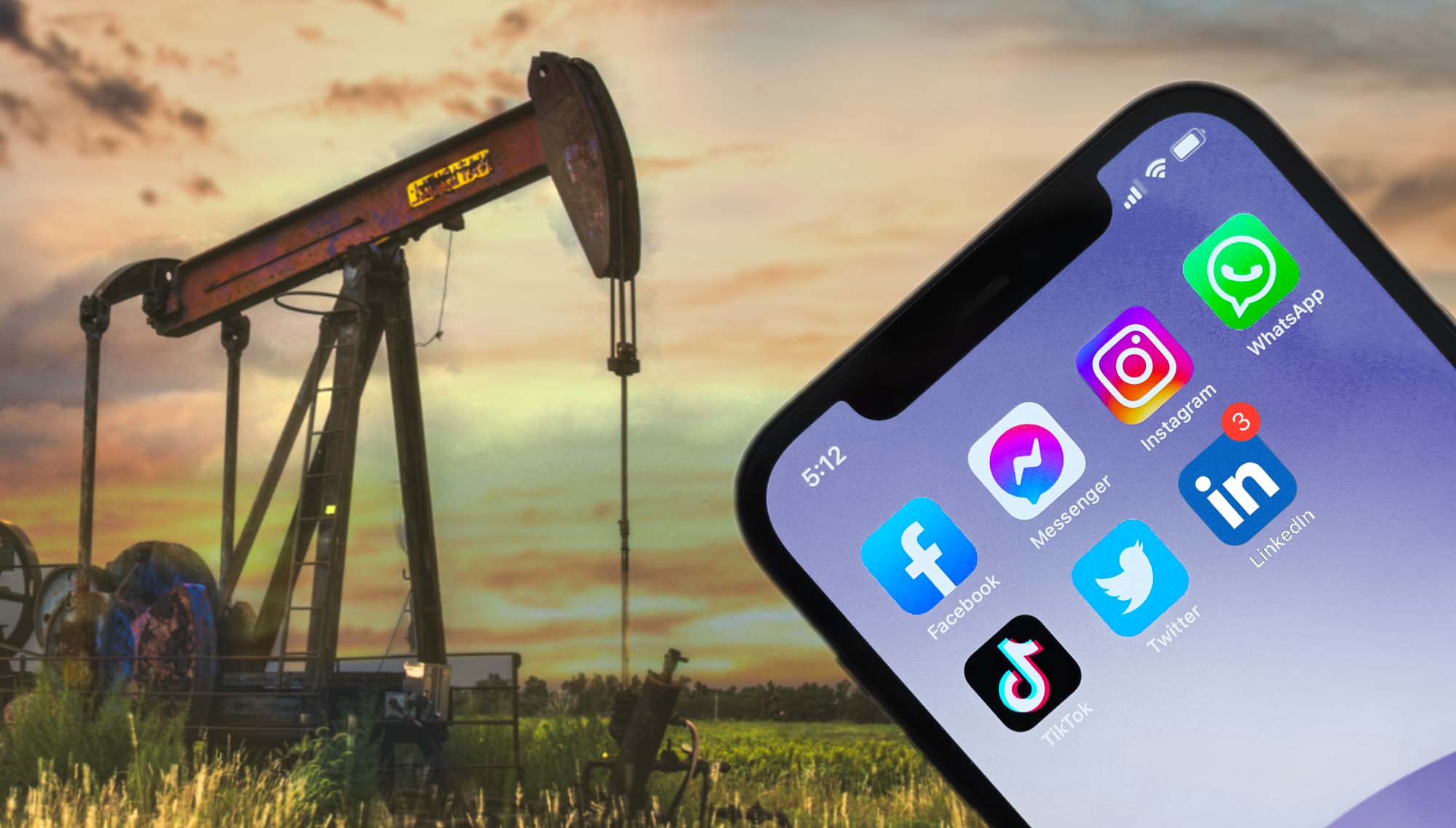Digital marketing in oil and gas is a relatively new phenomenon
Oil and gas companies are slowly moving towards digital transformation, incorporating digital tactics into their word-of-mouth marketing style that has been prevalent for decades.
Before picking up the phone or venturing into a meeting, B2B customers head online to do their research on a company. If your organization doesn’t have a website — or has one that hasn’t been updated in years — they may not think too highly of your business.
However, moving marketing efforts online after decades of closing deals with handshakes can be challenging for oil and gas companies. At Definity Web, we work exclusively with organizations in the oil and gas industry and enable them to combine the new world of digital marketing with their word-of-mouth marketing style.
In this article, we’ll show you what kind of oil and gas digital marketing strategy you should use, and the top 5 tactics that can help you achieve it.
What is an effective strategy for digital marketing in oil and gas?
Many people confuse strategies and tactics, so let’s clarify that first: A strategy is an overarching plan of action that is designed to help you reach a specific goal. A tactic, on the other hand, is the method for achieving that goal. You can apply many tactics to implement a specific strategy.
At Definity Web, we mainly focus on the traffic and conversion strategy in digital marketing for oil and gas. As the name suggests, this strategy has two parts:
- Traffic: This refers to getting prospects to the website.
- Conversion: This refers to compelling prospects to take a specific action once they are on the website.
These two parts of the strategy work hand in hand, and you can’t have success without one or the other. If there is no one coming to your website, then you can’t convince them to take action. And if you’re not encouraging them to take action, then there is no point in those prospects being on the website in the first place.
There’s an unending list of tactics we could cover. However, we’re going to focus on our top 5 tactics to help oil and gas companies implement a traffic and conversion strategy to reach their business goals.

5 proven tactics for digital marketing in oil and gas
1: SEO

Search engine optimization, or SEO, can seem confusing at first. However, it’s really all about understanding what your prospects are looking for online. SEO involves a lot of keyword research, using specific tools to understand how many people are searching for a specific word or phrase online. However, before you begin your SEO research, it’s important to have a solid understanding of your ideal customer. You will need to know what challenges they face in their day-to-day lives at work, what goals they want to achieve, and what obstacles are standing in their way. This will help you determine the keywords they are typing into Google when they search online.
SEO is a vital tactic in digital marketing in oil and gas because it helps bring prospects to your website organically (as opposed to through a paid ad). If you use industry-specific keywords on your website in strategic places, and your ideal customers are looking for those same specific keywords on Google, it will suggest your website to them as a search result. The higher your website ranks in Google, the more likely the prospect is to visit your website.
2: Social media

SEO is an excellent way to bring traffic to your website, and in oil and gas, social media marketing is another traffic-funneling tactic you can use as part of your strategy. You don’t need to have a presence on every social media channel — instead, begin by focusing on one or two channels that are relevant to your business and your customers. For most oil and gas companies, this will include Linkedin. It may also include Facebook or Instagram depending on your target audience.
You don’t need to post on social media every day or check it every hour. However, it’s important to have a consistent schedule, such as posting three times a week or checking your social media twice a day. Ensure your posts are interesting, visually appealing, use relevant hashtags, and link back to your website to direct traffic.
3: Conversion copywriting

Once you’ve gotten prospects to the website using tactics such as SEO and social media, it’s time to compel them into taking a specific action. After all, you don’t want a prospect to get to your website, look around, and then just leave. Ideally, you want the prospect to make a call, fill out a form, download a resource, or take some other kind of action that brings them to the next step in the sales and marketing funnel.
This is where conversion copywriting comes in. Many digital agencies have the client write the website copy — and unless there is a professional conversion copywriter on the team, this isn’t a good idea. A conversion copywriter first understands the nuances of your business through a series of deep dive meetings, and then applies their expertise and copywriting skills to write website copy that appeals to prospects’ needs and encourages them to take the next step. A good conversion copywriter can show your prospect why they should work with your business within a few seconds of them landing on your website.
4: Design and user experience

Everyone wants an oil and gas website that looks great. While we agree that beautiful websites can be effective, there is a lot more to web design for oil and gas than cool logos and a strong color palette. Design and user experience should work together to visually appeal to your prospect and make the website intuitive and easy to use.
For example, consider the call to action button — one of the most important aspects of any website. Effective design and user experience consider what color the button should be, how big it should be, how big the font should be, where the button should be placed, and so many other factors in addition to just whether the button looks pretty. Similarly, design and user experience also focus on navigating the prospect through the website. If they land on the home page, which page should they go to next and how can they get there organically and intuitively? This is a key tactic for initiating conversion on a website.
5: Lead magnets

There are many ways to capture your prospect’s attention and get their contact details when they come to your website, but one of the most effective ways to convert a prospect into a lead is with a lead magnet. This is a short downloadable resource that contains actionable and useful information the prospect needs to know and can apply to their business right away. It’s typically a page or two at most, but an incredibly high-value offer. In return for downloading the lead magnet, the prospect needs to input their email address, name, business, and whatever other information you want to capture.
Once they have the prospect’s contact information, the oil and gas company can nurture them through a strategic email marketing campaign, providing more information about how they can help them solve the issues they are experiencing and giving them an opportunity to book a call or meeting.
Put your digital marketing in oil and gas strategy to work
You don’t have to embark on your digital marketing in oil and gas journey alone. At Definity Web, we have helped our oil and gas customers land billion-dollar accounts through our traffic and conversion strategy, and continue to work with some of the leaders in the industry.
Get in touch to learn more about how we apply the traffic and conversion digital marketing oil and gas strategy to your business. Check out our Web Strategy Exploration™ process to learn how we achieve the best results for our clients.





